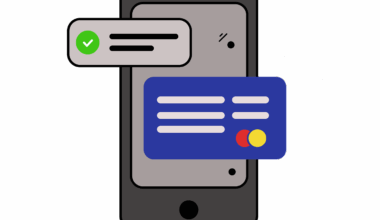Asymmetric Information in Contract Theory
Asymmetric information is a central concept in contract theory, referring to situations where one party possesses more or better information than the other in a transaction. This imbalance can significantly impact the design and performance of contracts. In contexts where information is asymmetric, issues such as moral hazard or adverse selection can arise. For instance, in insurance markets, the insured may know more about their risk level than the insurer. As a result, insurers face the risk that only the highest-risk individuals will seek coverage, leading to market inefficiencies. Therefore, understanding how to design contracts that mitigate the problems associated with asymmetric information is crucial. Researchers, such as George Akerlof, highlighted these concerns through their work, revealing that incomplete information can lead to market failures. To address asymmetric information, contracts often include incentives designed to align the interests of both parties. Strategies may include performance-based pay or warranties that help provide additional information. By creating contracts that account for these informational differences, parties can achieve better outcomes and minimize inefficiencies.
Incentives and Contract Design
One effective way to mitigate the negative effects of asymmetric information in contract design is through the implementation of incentives. Contracts structured with incentives not only encourage the informed party to disclose reliable information but also align their interests with those of the uninformed party. For example, in employment contracts, offering performance bonuses can motivate employees to perform well, thereby benefiting employers. Such incentive-based contracts can help bridge the gap caused by information asymmetries. Additionally, contracts can incorporate monitoring mechanisms that provide insights into the performance of the informed party. This can include audits or progress reports. By designing contracts with these elements, parties can reduce uncertainty while fostering a cooperative environment. It is also crucial to consider the costs involved in implementing such contracts, as excessive monitoring may lead to inefficiencies. A balanced approach is necessary to design contracts that not only incentivize desired outcomes but also remain cost-effective and practical for both parties. To accomplish this, contract designers must analyze each situation carefully, tailoring their contracts to meet the specific informational challenges they face.
The Role of Trust in Contracts
Trust plays a pivotal role in the relationships formed under asymmetric information. When parties believe in the integrity and competence of each other, they are more likely to engage in mutually beneficial agreements. Trust can reduce the perceived risks associated with information imbalances in contracts. It enables parties to navigate uncertainties more effectively and can lower the need for extensive contractual provisions. High levels of trust may facilitate smoother negotiations, impacting both contract design and performance positively. However, developing and maintaining trust may take considerable time and effort. Breaches of trust, whether due to unethical behavior or misunderstandings, can lead to conflicts and financial losses. Performance histories and testimonials can serve as critical tools for building trust. Furthermore, establishing a strong reputation within networks can also enhance trust levels, as parties are more likely to engage with those they perceive as reputable. Ultimately, fostering trust in contractual relationships influenced by asymmetric information is essential for ensuring successful outcomes. Without trust, the effectiveness of incentives and other contract adjustments may be significantly diminished.
Contractual Solutions to Information Asymmetry
To effectively address asymmetric information challenges, several contractual solutions can be employed. These solutions range from incorporating contingencies to stipulating explicit disclosures of information. A widely used approach is to include clauses in contracts that require one party to share specific information regularly. This can help mitigate the risks associated with unforeseen circumstances. Another approach could involve the use of third-party verification systems that raise transparency levels. For instance, in real estate transactions, employing independent appraisers ensures that all parties are informed about the property’s fair market value. Moreover, contracts may feature penalties for failure to disclose relevant information. Such penalties serve as a deterrent against deceitful practices. An important aspect of designing these solutions is to anticipate potential scenarios where information asymmetry can harm either party. Contract designers should prioritize clear language and explicit terms that outline expectations, responsibilities, and consequences. By employing these strategies, the challenges posed by asymmetric information can be effectively minimized, leading to more successful and equitable contractual relationships in practice.
Real-World Application of Contract Theory
The principles of contract theory, particularly regarding asymmetric information, find usage across various industries. From healthcare to finance, contracts are structured to address the unique challenges posed by differing levels of information among parties. For example, in healthcare, insurers and providers operate under asymmetric information when patients seek treatments. Patients may not fully understand the costs or the necessity of specific procedures, leading to potential conflicts. Contractual arrangements, such as value-based care agreements, can be implemented to ensure that providers act in the patients’ best interests, balancing incentives and transparency. Similarly, in finance, loan agreements often consider the borrower’s creditworthiness, which is a reflection of asymmetric information. Banks may require extensive documentation to mitigate potential risks, leading to more secure lending practices. Furthermore, businesses often innovate their contracts continuously to adapt to the evolving asymmetries of information brought about by technology and market dynamics. Understanding these applications helps businesses and individuals build contracts that improve their chances of successful interactions. This approach ensures that agreements are upheld and disputes minimized, ultimately benefiting all parties involved.
Future Trends in Contract Design
The evolution of technology continues to shape the future of contract design, especially regarding asymmetric information. Innovations such as blockchain and smart contracts offer promising avenues for creating more transparent agreements. Blockchain technology can provide immutable records of transactions, ensuring both parties have access to the same information. This increased transparency reduces the risks associated with asymmetric information. Furthermore, smart contracts automatically execute terms once conditions are met, minimizing reliance on trust and enabling efficient enforcement. Such advancements redefine traditional contract structures, empowering parties to navigate asymmetric information more effectively. In addition, machine learning and data analytics can enhance contract design by predicting outcomes and risks associated with differing information asymmetries. Organizations can better tailor their contracts to specific circumstances, mitigating potential pitfalls. As businesses embrace these technological changes, they are likely to design more innovative and flexible contracts that cater to the dynamic nature of information exchange. The ongoing changes in contract design will create opportunities for improved relationships between parties, fostering a more efficient and fair contracting landscape for future transactions.
Conclusion: The Impact of Asymmetric Information
In conclusion, asymmetric information profoundly impacts contract design across various domains. Parties involved in contracts must be aware of the implications of information imbalances and strive to mitigate their effects. By incorporating strategies such as incentives, transparency provisions, and legal recourse, contracts can be designed more effectively. Additionally, the importance of trust and the adaptation of technology cannot be overlooked, as they play vital roles in facilitating better communication between parties. As the landscape of economics evolves, understanding the dynamics of asymmetric information will be crucial for businesses and individuals alike. Successful contract design relies on addressing these informational challenges while fostering partnerships built on trust and cooperation. Future trends indicate a movement toward more sophisticated contractual frameworks that leverage technological advancements to optimize contract performance and minimize inefficiencies. By continually adapting to the challenges set by asymmetric information, parties can achieve more favorable outcomes and ensure smoother transactions. The ability to design contracts that account for these complexities is essential to promoting a fair and effective economic environment.
References and Further Reading
For those intrigued by the topic of asymmetric information and contract theory, numerous resources are available for further exploration. Classic works in the field include “The Market for Lemons” by George Akerlof, which discusses the implications of information asymmetry in markets. Additionally, Oliver Hart and Bengt Holmström’s contributions to contract theory have further expanded upon these concepts, highlighting the importance of incentives and monitoring in contract design. For a more modern perspective, consider checking out publications on the application of digital technology to contract elements. Resources discussing blockchain applications, smart contracts, and innovative practices are increasingly relevant in today’s context. The Journal of Law and Economics often publishes valuable research articles exploring contract theory, providing insights for practitioners, academics, and students alike. Online platforms such as ResearchGate and Google Scholar are rich repositories for those seeking academic papers or studies on this subject. Continuous engagement with the latest literature will ensure a well-rounded understanding of the challenges and solutions associated with asymmetric information in contract design. Exploring these sources can deepen one’s knowledge and contribute to more effective contract management.


